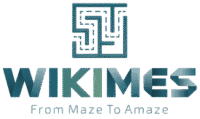After months of preparation, evaluations, and internal discussions, we’ve officially reached a key milestone in our MES journey — selecting the vendor we believe is the right fit for our factory.
This process wasn’t just about comparing systems. It was about identifying a solution that balances structure with flexibility, and a team that could support both our immediate needs and long-term goals.
A Recap of Our Evaluation Journey
We engaged three vendors throughout this process:
- A reputable international MES provider with strong presence in SEA,
- A well-established Chinese MES developer known for full-suite solutions,
- And a local team introducing a lighter, low-code MES built for quick customization and adaptability.
Each had their strengths, and we approached the evaluation with open criteria:
- Traceability framework and data architecture
- Expansion capability across SMT, MI, and FATP
- System admin configurability and internal ownership potential
- Support readiness, both regionally and long term
- Ability to align with our implementation timeline and team bandwidth
Why We Made the Decision
We ultimately selected the solution that offered the right balance of agility, process coverage, and alignment with our current digitalization stage.
The chosen vendor proposed a configurable MES built on a low-code platform — a model that supports fast iteration, easy change management, and better alignment with shop floor dynamics. Just as importantly, their local support team showed strong commitment and clarity throughout the engagement.
This does not discount the capabilities of the other vendors involved. On the contrary, we deeply appreciate the time, effort, and insights they shared with us. One vendor, in particular, remains in close contact — while not selected at this stage, their solution is still highly regarded and may serve as a valuable option should our direction evolve. We’re grateful for their professionalism and openness.
What’s Next?
We are now entering a pilot phase, beginning with proof-of-concept activities on selected production lines. This phase will allow us to validate core workflows, test integrations, and collaboratively refine the deployment approach before scaling.
The journey continues — from selection to execution. Our focus remains on strengthening traceability, improving data visibility, and supporting the shop floor with systems that truly work for the people using them.
“If you’re on your own MES journey, I encourage you to take the time to explore different perspectives. The right solution is not always the most complex or expensive — it’s the one that fits your factory, your team, and your readiness for change.”

